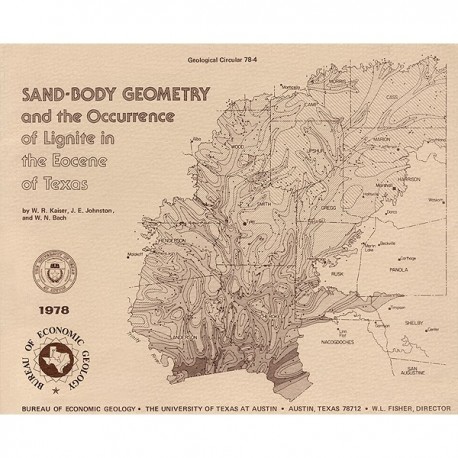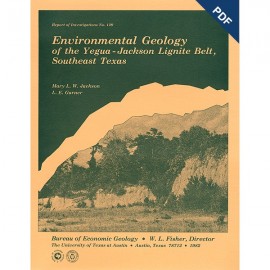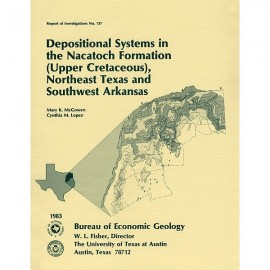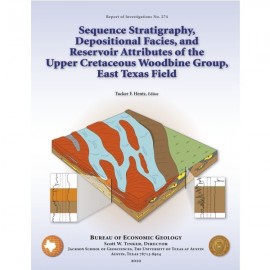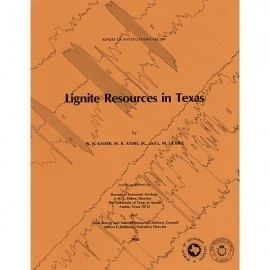Geological Circulars
-
Books & Reports
- Reports of Investigations
- Guidebooks
- Udden Series
- Geological Circulars
- Down To Earth
- Atlases of Major Oil and Gas Reservoirs
- Texas Memorial Museum Publications
- Environmental Geologic Atlas of the Texas Coastal Zone
- Mineral Resource Circulars
- Other Reports
- Seminars and Workshops
- Handbooks
- Submerged Lands of Texas
- Symposia
- Annual Reports
- Open File Reports
-
Maps & Cross Sections
- Thematic Maps
- Miscellaneous Maps, Charts & Sections
- Geologic Atlas of Texas
- STATEMAP Project Maps
- Geologic Quadrangle Maps
- Cross Sections
- Highway Geology Map
- Energy and Mineral Resource Maps
- Shoreline Change and Other Posters
- Wilcox Group, East Texas, Geological / Hydrological Folios
- Bouguer Gravity Atlas of Texas
- River Basin Regional Studies
- Featured Maps
- Posters
- Teachers & the Public
-
Geological Society Publications
- Gulf Coast Association of Geological Societies
- Alabama Geological Society
- Austin Geological Society
- Corpus Christi Geological Society
- Houston Geological Society
- Lafayette Geological Society
- Mississippi Geological Society
- New Orleans Geological Society
- South Texas Geological Society
- GCS SEPM Publications
- Historic BEG & UT Series
Sand-Body Geometry and the Occurrence of Lignite in the Eocene of Texas
GC7804
For a downloadable, digital version: GC7804D.
This product is no longer in stock
GC7804. Sand-Body Geometry and the Occurrence of Lignite in the Eocene of Texas, by W. R. Kaiser, J. E. Johnston, and W. N. Bach. 19 p., 21 figs., 1978.
To purchase this publication as a PDF download, please order GC7804D.
ABSTRACT
Lignite occurs in three Eocene stratigraphic units--the Wilcox Group, Yegua Formation, and Jackson Group--and in three ancient depositional systems-fluvial, deltaic, and strandplain/lagoonal. Sand-body geometry and lignite occurrence in these systems are revealed by regional sand-percent, net-sand, maximum-sand, and lignite-isopleth maps made from 3,050 electric and induction logs.
In the Wilcox Group of east-central and East Texas, straight-, dendritic-, and bifurcating-channel geometries are displayed. Lignite at exploitable depths is a component facies of fluvial depositional systems. Sites of accumulation were hardwood swamps located in interchannel basins established by bounding alluvial ridges. Projection updip to the outcrop of overlapping subsurface areas of low sand content (interchannel basins) and high lignite count intersects many large strippable deposits. The geometries of Wilcox sand dendroids and belts are comparable to those associated with Rocky Mountain Paleocene and Eocene coals.
The Jackson Group of southeast Texas is characterized by lobate sand-body geometry. Lignite is of deltaic origin; it represents marsh accumulation in lower delta-plain environments. Commercial lignites are postulated blanket peats which spread across abandoned distributary channels. Projection updip to the outcrop of overlapping subsurface areas of high sand content (delta lobes) and high lignite count intersects several commercial deposits.
Jackson-Yegua lignite in South Texas is associated with strike-oriented linear sand bodies; it occurs topping strandplain/barrier-bar beach sequences. Major occurrences are elongate and landward of the axes of the Jackson-Yegua strandplain/barrier-bar systems. Projection of this subsurface trend along depositional strike to the outcrop intersects large strippable deposits. Lobate and strike-oriented linear sand bodies of the Jackson Group in Texas are comparable to those associated with Rocky Mountain Upper Cretaceous coals.
Keywords: coal, Eocene, lignite, Jackson Group, sand-body geometry, Texas, Wilcox Group, Yegua Group
Citation
Kaiser, W. R., Johnston, J. E., and Bach, W. N., 1978, Sand-Body Geometry and the Occurrence of Lignite in the Eocene of Texas: The University of Texas at Austin, Bureau of Economic Geology, Geological CIrcular 78-4, 19 p.
